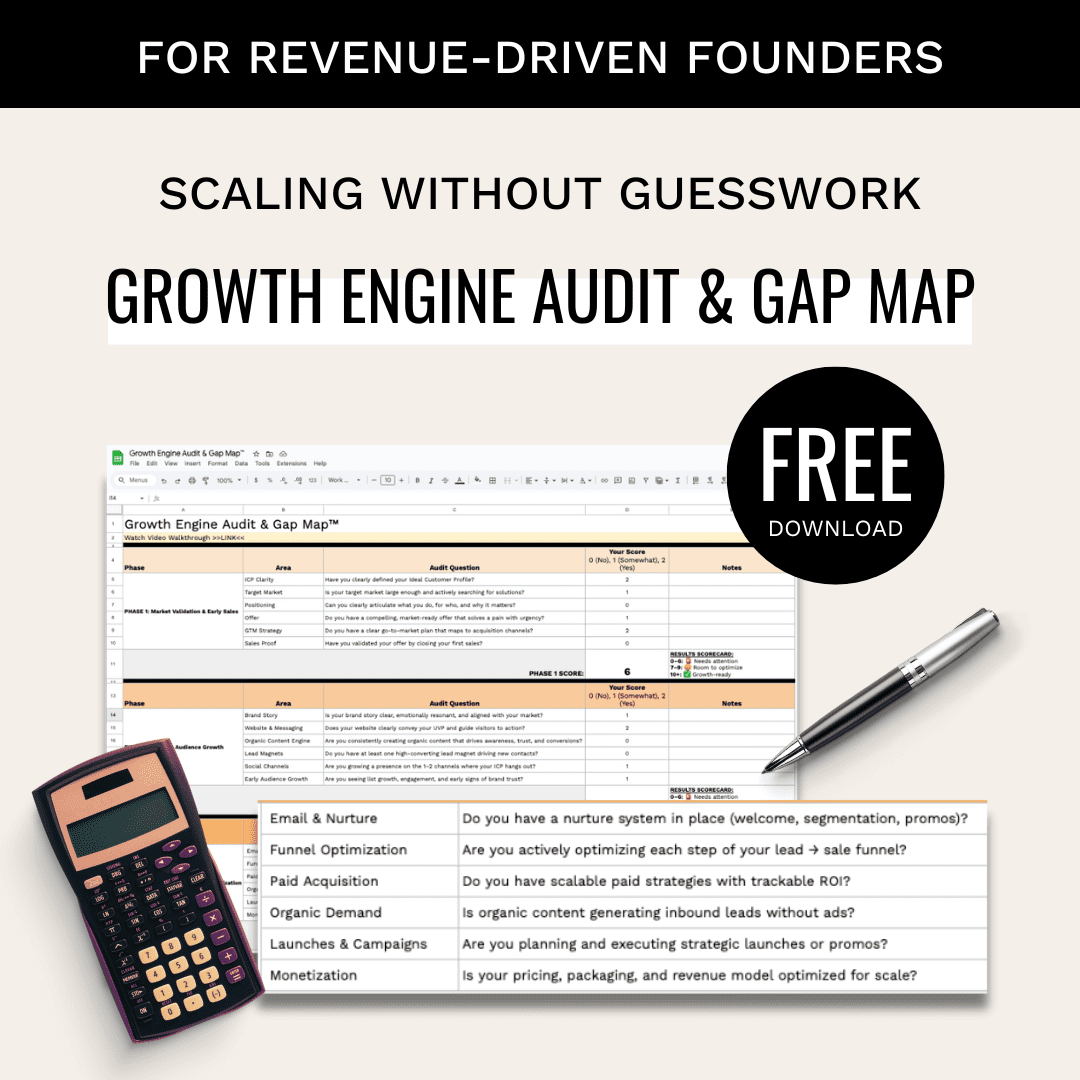Testing email CTAs (Call-to-Actions) can boost your marketing results by improving click-through rates, conversions, and revenue. Here’s what you need to know to get started:
- Why Test CTAs? Small changes like button text, color, or placement can directly impact your email performance.
- Common Problems: Issues like poor audience segmentation, mobile optimization challenges, and tracking gaps often lead to unreliable results.
- How to Test Effectively: Use a framework that includes clear goals, control groups, and single-variable tests to isolate what works.
- Tools You Need: Platforms like HubSpot, Marketo, or Mailchimp offer features like A/B testing, heat maps, and analytics to track success.
- Key Metrics to Watch: Focus on click-through rates, conversion rates, and revenue per email to measure success.
Quick Tip: Start with A/B testing one variable, like button copy, and gradually move to more complex tests as you gather data.
CTA testing doesn’t just improve emails – it helps refine your overall marketing strategy. With a structured approach, you can make data-driven decisions that lead to better results.
Ultimate A/B Testing Guide For Email Marketing
Core Elements of CTA Testing
Testing email CTAs involves a structured approach, focusing on key elements that yield measurable outcomes.
Setting Test Goals and Metrics
The first step in CTA testing is to define clear objectives and tie them to performance metrics. For tech companies, the following metrics are often the most relevant:
| Metric Type | Key Indicators | Business Impact |
|---|---|---|
| Engagement | Click-through rate, Open rate | Tracks initial audience response |
| Conversion | Trial signups, Demo requests | Measures direct business outcomes |
| Revenue | Revenue per email, Subscription upgrades | Quantifies financial return |
For instance, a cloud services provider might monitor CTA clicks alongside subsequent conversion steps to understand the entire customer journey. Once metrics are in place, the next move is to focus on testing individual CTA components to identify what drives results.
Single-Variable Test Design
To get accurate insights, test one CTA element at a time:
- Button Copy Testing
Experiment with different action verbs while keeping everything else unchanged. For example, a cybersecurity company found that tweaking button text led to higher click-through rates among technical decision-makers [2]. - Visual Elements
Keep the wording constant, but vary the design. Test aspects like button size, shape, color contrast, placement, and even the amount of white space around the CTA.
User Behavior Triggers
Leverage customer data to personalize CTAs based on user actions. Here’s how triggers can be applied effectively:
| Trigger Type | Application | Example |
|---|---|---|
| Usage-Based | Feature adoption | Display "Upgrade Storage" as users near their limits |
| Role-Based | Job function | Offer technical docs to developers; ROI tools for executives |
| Engagement | Email interaction | Provide detailed CTAs for active users; simpler ones for less engaged users |
To make this process seamless, integrate your email platform with CRM and analytics tools. This allows for automated, data-driven CTA personalization while maintaining the integrity of your tests.
Technical Audience Testing Methods
Testing CTAs (Call-to-Actions) for technical audiences requires precision. These audiences often respond best to data-driven language and clear value propositions. Fine-tuning CTA testing for this group builds on basic principles while addressing their specific preferences and decision-making processes.
Job Function CTA Tests
Different roles within a technical audience prioritize distinct messaging. For example, developers are drawn to hands-on, detail-oriented content, while executives focus on strategic outcomes.
| Job Function | Effective CTA Elements | Example Copy |
|---|---|---|
| Developers | Technical specifications, API references | "Access API Documentation" |
| IT Managers | Performance metrics, integration details | "View Integration Guide" |
| C-Level | ROI data, strategic benefits | "Calculate TCO Savings" |
To measure success, use UTM codes to segment performance by job function. This ensures insights are tied directly to the audience’s role.
A/B vs. Multivariate Tests
A/B testing is a great starting point for technical audiences. It focuses on one variable at a time, such as specific technical terms or value propositions, making it easier to measure the impact of small adjustments.
Once you’ve established a baseline with A/B testing, multivariate tests can be introduced – provided your audience size supports it. These tests help analyze how multiple changes interact. For technical buyers, allow longer testing periods to account for their typically extended decision cycles. Track both immediate engagement metrics and downstream conversions for a comprehensive view of performance.
AI-Powered Test Optimization
AI tools can take your CTA testing to the next level, offering advanced insights tailored to technical audiences. By leveraging natural language processing and machine learning, these tools refine your CTAs in real-time.
Key AI features to consider:
| Feature | Application | Benefit |
|---|---|---|
| Predictive Analytics | Forecast segment response | Optimize performance early |
| Dynamic Personalization | Adjust CTAs by behavior | Increase relevance |
| Technical Term Analysis | Evaluate language impact | Enhance clarity |
| Multi-segment Testing | Compare role-specific responses | Fine-tune targeting |
When choosing AI tools, prioritize those that integrate seamlessly with your email platform and provide transparent reporting. This ensures you can validate AI-driven recommendations and maintain alignment with the needs of your technical audience.
Testing Tools and Setup
Once you’ve established a solid testing framework, choosing the right tools becomes the next step. For effective CTA (call-to-action) tests, the tools you select can make all the difference.
Enterprise Email Testing Tools
For larger, more complex campaigns, enterprise platforms like Marketo and HubSpot offer a range of advanced testing features:
| Feature | Marketo | HubSpot |
|---|---|---|
| Dynamic Content | Account-based personalization | Smart content rules |
| Test Automation | Automated winner selection | Predictive testing |
| Analytics | Revenue attribution | Multi-touch reporting |
| Segmentation | Account-level targeting | Behavioral scoring |
To maximize results, set up analytics dashboards that track both immediate and long-term conversions. For example, a B2B software company boosted click-through rates by 22% and demo sign-ups by 15% in just three months by testing button colors [2].
While enterprise tools provide robust features, they aren’t the only option. Smaller businesses can achieve meaningful results with simpler, more accessible platforms.
Small Business Testing Tools
For smaller organizations, tools like Mailchimp and ActiveCampaign deliver essential testing features without the complexity of enterprise platforms:
| Feature | Implementation Tips | Impact |
|---|---|---|
| Mobile Preview | Ensure buttons are tap-friendly | Avoid accidental clicks |
| Heat Maps | Track engagement patterns | Refine CTA placement |
| A/B Testing | Start with single-variable tests | Gain clear performance data |
| Templates | Use pre-built layouts | Speed up deployment |
Small teams can start by running basic A/B tests, such as experimenting with CTA copy or button colors. Once comfortable, they can gradually explore more detailed variables to fine-tune their campaigns.
sbb-itb-e8c8399
Measuring and Improving Results
To make email marketing campaigns more effective, it’s essential to analyze CTA (Call-to-Action) test results thoroughly. By understanding and applying these insights, you can make smarter, data-backed decisions that lead to better outcomes.
Test Result Analysis
When evaluating CTA performance, focus on key metrics and address potential problem areas:
| Metric | What It Measures | Common Issues |
|---|---|---|
| Click-Through Rate (CTR) | Percentage of recipients who clicked the CTA | Low engagement on mobile, poor visibility |
| Conversion Rate | Actions completed after clicking the CTA | Mismatched landing pages, slow load times |
| Device Engagement | Performance across desktop and mobile | Rendering problems, small tap targets |
| Bounce Rate | Email delivery success | Poor list quality, spam triggers |
These metrics provide valuable insights into what’s working and what needs improvement. Use analytics tools to break down results by audience segments and device types, helping you identify underperforming areas and refine your approach.
Regular Testing Schedule
Once you’ve analyzed the data, establish a consistent testing schedule to keep refining your campaigns. Many email marketing teams stick to monthly or quarterly testing cycles, depending on the size of their audience and the volume of campaigns [2].
| Testing Phase | Timeline | Key Activities |
|---|---|---|
| Planning | Week 1 | Define variables and create hypotheses |
| Execution | Weeks 2–3 | Run A/B tests with control groups |
| Analysis | Week 4 | Review test results and document findings |
| Implementation | Next cycle | Apply successful variations |
Keep track of all test variables and outcomes in a centralized dashboard. This not only ensures transparency but also helps guide future experiments.
Applying Test Findings
The insights gained from testing don’t just improve CTAs – they can also enhance other aspects of your marketing strategy. Here’s how:
| Marketing Element | How to Use CTA Insights |
|---|---|
| Landing Pages | Match successful email CTA designs and placements |
| Content Strategy | Incorporate high-performing action words and phrases |
| Mobile Design | Use patterns that work well across devices |
| Personalization | Apply winning variations to specific audience segments |
"Without execution, strategy is dead." – Lillian Pierson, Data-Mania
As you implement changes, make sure your results are backed by statistically significant data [2]. Combine quantitative metrics with qualitative feedback to fine-tune your CTAs and overall email marketing efforts. This balanced approach ensures that your improvements are both strategic and effective.
Conclusion
Now that we’ve covered the core framework, let’s focus on the strategies and steps that can help you achieve success in data-driven email marketing.
Technical Marketing Tips
When it comes to testing your calls-to-action (CTAs), a systematic approach is key. Here are some tried-and-tested methods that deliver measurable outcomes:
| Testing Element | Best Practice | Impact |
|---|---|---|
| Mobile Design | Use large, tappable buttons with clear contrast | Over 50% boost in mobile click-through rates [1] |
| Statistical Validity | Ensure minimum sample size requirements | Prevents false positives in test results [2] |
| Attribution | Add UTM parameters to all CTA links | Enables precise conversion tracking across campaigns [3] |
| Accessibility | Follow WCAG-compliant color contrast and text | Reaches a broader audience and improves engagement |
For even greater impact, tailor your CTAs to specific buyer personas, such as developers, IT decision-makers, or other technical audiences. Track successful patterns and document them centrally to ensure your team retains this valuable knowledge.
Once you’ve fine-tuned these strategies, it’s time to move toward a structured implementation process.
Implementation Guide
To put these technical marketing practices into action, follow these steps to build and optimize your testing system:
| Phase | Key Activities | Timeline |
|---|---|---|
| Foundation | Audit current metrics and choose testing tools | Week 1-2 |
| Framework | Develop a methodology and define success metrics | Week 3-4 |
| Pilot | Conduct a single-variable test in a high-traffic campaign | Week 5-6 |
| Scale | Establish a regular testing schedule | Ongoing |
Start by focusing on high-impact variables like button color, placement, and copy [1]. Use automation to streamline testing while maintaining quality. Every test should begin with a hypothesis tied directly to your business goals. AI-powered tools can also be a game-changer, helping you fine-tune CTA performance across different audience segments.
FAQs
What’s the difference between A/B testing and multivariate testing for optimizing email CTAs?
A/B Testing vs. Multivariate Testing for Email CTAs
When it comes to fine-tuning your email CTAs, both A/B testing and multivariate testing offer effective strategies, though they take different paths to achieve results.
A/B testing is straightforward: it compares two versions of an email – Version A and Version B – by focusing on a single variable. For example, you might test whether changing the CTA text or button color leads to better engagement. This method is simple and works well when you’re looking to evaluate one specific change at a time.
Multivariate testing takes things a step further by analyzing multiple variables simultaneously. Instead of just testing the CTA text or button color, you could also experiment with placement, font size, or other design elements. The goal here is to find the best combination of changes. However, this approach demands a larger audience and more data to yield reliable insights.
If you’re new to testing or working with a smaller audience, A/B testing is an excellent starting point. But for campaigns with higher traffic and more advanced goals, multivariate testing can help you fine-tune several elements at once for maximum impact.
How can AI tools improve CTA testing for technical audiences in email campaigns?
AI tools can play a big role in improving CTA testing for technical audiences by helping marketers target and personalize with greater precision. By processing large datasets, AI can uncover trends in user behavior, preferences, and engagement. This makes it possible to create CTAs that truly connect with specific segments of your audience.
On top of that, AI-driven platforms can handle A/B testing on a large scale, tweaking elements like subject lines, button text, and design in real time. This means your CTAs aren’t just based on guesswork – they’re constantly being fine-tuned to get better results. Using AI in this way can boost conversion rates and make your email marketing efforts far more effective.
What are the best practices for ensuring accurate and reliable results when testing CTAs in email campaigns?
To make sure your CTA test results are reliable and meaningful, start by setting specific goals and metrics. This helps you measure success accurately. It’s also important to work with a large enough sample size to ensure your results are statistically sound. Using tools like sample size calculators can help you figure out how big your audience needs to be.
When conducting tests, stick to A/B testing where you change only one element at a time, like the button color or the wording. This way, you can clearly see what makes a difference. Let your test run long enough to account for changes in user behavior over time. Once the data is in, analyze it carefully using proper statistical methods to make sure your results aren’t just random. And don’t forget to document everything – this will make it easier to refine your approach in the future.
Related Blog Posts
- 10 A/B Testing Tips for B2B Campaigns
- 10 B2B Form Design Tips for Higher Conversions
- A/B Testing Steps for Landing Pages
- A/B Testing Frameworks for Email Personalization




